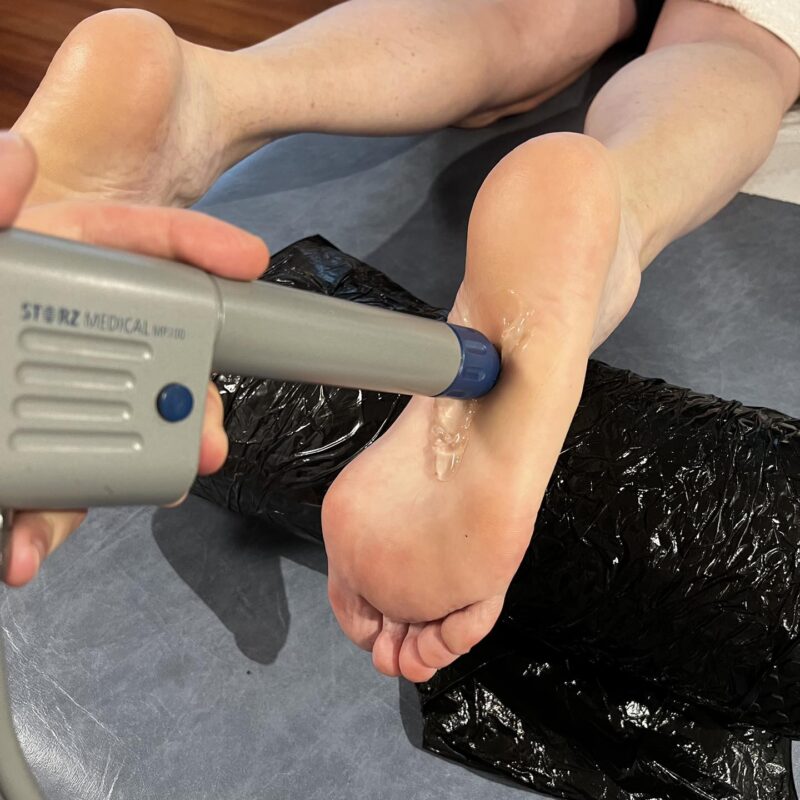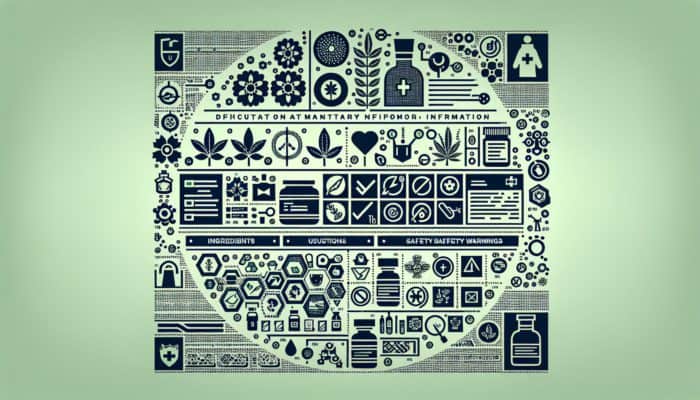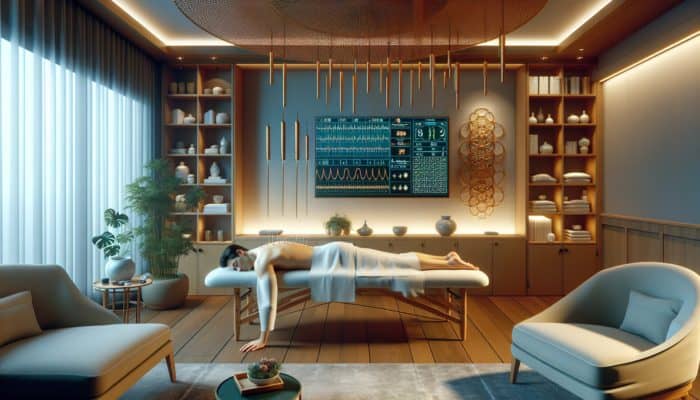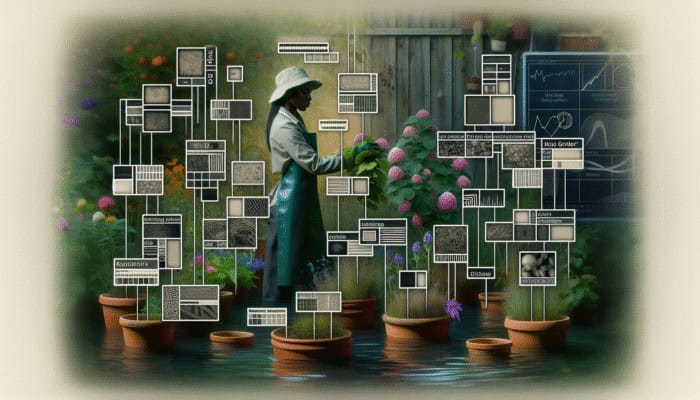Unlock the Secrets of Red Light Therapy for Enhanced Back Pain Relief
Back pain is a pervasive challenge affecting millions of individuals worldwide, transcending various age groups, genders, and lifestyles. This discomfort can manifest in numerous ways, ranging from fleeting acute pain to debilitating chronic conditions that can linger for months or even years. The sources of back pain are varied and often arise from a complex interaction of physical, psychological, and environmental elements.
Commonly identified causes include muscle strains, herniated discs, arthritis, and the detrimental effects of poor posture. The intricate nature of back pain can complicate diagnosis and treatment, as it may serve as a sign of a more serious health concern or exist as an independent issue. Consequently, healthcare providers face a multi-faceted landscape of possible diagnoses and treatments for individuals suffering from this condition.
The impact of back pain extends well beyond physical sensations; it can disrupt daily routines and significantly hinder an individual’s quality of life. Due to pain, many people find it increasingly difficult to perform everyday tasks, enjoy recreational activities, or maintain social connections. This struggle can lead to feelings of frustration and isolation, contributing to mental health challenges such as depression. Furthermore, back pain is a leading cause of missed workdays, resulting in substantial economic costs for individuals and the broader community. Understanding the complexities surrounding back pain is crucial for developing effective treatment strategies that enhance those impacted’s overall quality of life.
Essential Insights into Back Pain Management with Red Light Therapy
- Back pain is a common ailment that can stem from multiple factors, including muscle strain, injuries, and poor posture, making it a complex condition to treat.
- Red light therapy (RLT) provides a non-invasive treatment option that utilizes low-level red light to promote healing and reduce inflammation in affected areas.
- This innovative therapy alleviates back pain by enhancing blood circulation, reducing muscle stiffness, and accelerating tissue healing.
- Using red light therapy for back pain offers a drug-free method of pain relief, improved mobility, and faster recovery from injuries.
- Portable red light therapy devices allow for convenient at-home treatments, but following safety guidelines and consulting healthcare professionals is essential.
 In-Depth Exploration of Red Light Therapy: A Revolutionary Healing Approach
In-Depth Exploration of Red Light Therapy: A Revolutionary Healing Approach
Red light therapy (RLT) stands out as a groundbreaking treatment option that leverages specific wavelengths of light to foster healing and address many health issues. This non-invasive therapy typically employs low-level lasers or light-emitting diodes (LEDs) to project red and near-infrared light onto targeted areas of the body. The underlying science of RLT centres on the stimulation of cellular processes, particularly in the mitochondria, which are the energy-producing units within our cells.
By enhancing mitochondrial function, red light therapy significantly boosts the production of adenosine triphosphate (ATP), our cells’ primary energy currency. This increase in ATP production results in elevated energy levels and facilitates cellular repair processes. In recent years, red light therapy has gained momentum, especially within sports medicine and rehabilitation, as athletes increasingly turn to this technology to accelerate recovery from injuries and improve overall performance.
The applications of RLT extend beyond the athletic community; it has been extensively researched for various conditions, including skin disorders, joint pain, and inflammatory conditions. Ongoing studies continue to uncover the therapeutic potential of red light therapy, affirming its status as an appealing option for individuals seeking relief from persistent pain issues, including back pain.
Understanding How Red Light Therapy Effectively Eases Back Pain
The effectiveness of red light therapy in alleviating back pain can be attributed to its ability to penetrate the skin and profoundly stimulate the underlying tissues. When applied to a painful area, the red and near-infrared wavelengths enhance blood flow and oxygenation, which is vital for healing damaged tissues. This improved circulation not only facilitates the delivery of essential nutrients but also aids in removing metabolic waste products that contribute to inflammation and discomfort.
As a result of these mechanisms, individuals may notice significant reductions in pain and enhancements in overall mobility. Furthermore, red light therapy is known for its robust anti-inflammatory properties, amplifying its effectiveness in managing back pain. Inflammation is a common underlying contributor to various types of back pain, often arising from injuries or chronic conditions such as arthritis.
By modulating inflammatory responses at the cellular level, RLT plays a crucial role in reducing swelling and tenderness in the affected areas. This dual action—improving circulation while simultaneously diminishing inflammation—positions red light therapy as a compelling holistic approach for those seeking effective ways to manage their back pain.
 Exploring the Multi-Faceted Benefits of Red Light Therapy for Back Pain Relief
Exploring the Multi-Faceted Benefits of Red Light Therapy for Back Pain Relief
Red light therapy’s benefits extend beyond mere pain alleviation; they encompass a broad spectrum of positive effects that can significantly enhance an individual’s overall well-being. A key advantage of RLT is its non-invasive character, allowing patients to avoid the potential side effects typically associated with pharmaceutical treatments or invasive procedures. This aspect makes red light therapy particularly appealing for individuals who may have reservations about conventional medical therapies or those who have not experienced relief through other avenues.
Moreover, red light therapy is generally well-tolerated, with minimal reported side effects, making it suitable for diverse patients. Another significant benefit is the cumulative effect observed with regular usage. Many users report enduring symptom improvements by integrating red light therapy into their daily routines. Such a long-term approach addresses immediate discomfort and fosters ongoing healing and recovery.
RLT can be easily incorporated into existing treatment plans alongside other therapies, such as physical rehabilitation or chiropractic care. As more individuals seek complementary therapies for chronic conditions like back pain, red light therapy emerges as a versatile and practical therapy that can enhance overall treatment outcomes.
Maximizing the Benefits of Red Light Therapy in the Comfort of Your Home
The growing popularity of red light therapy among those seeking relief from back pain can be attributed to the convenience of at-home treatment options. With technological advances, various devices designed for personal use are now available, ranging from portable handheld units to larger panels intended for full-body treatment. These devices emit specific light wavelengths that promote healing and reduce inflammation effectively.
At-home RLT offers a practical solution for busy individuals or those who prefer a more private setting for their treatment sessions. To maximize the benefits of red light therapy in a home environment, adhering to recommended guidelines regarding treatment duration and frequency is essential. Experts typically recommend sessions lasting between 10 to 20 minutes per targeted area, several times a week, depending on the severity of the treated condition.
Consistency is critical; regular use can produce more pronounced and lasting results. Additionally, users should select devices that emit the correct therapeutic wavelengths—generally within the range of 600 to 900 nanometers—to achieve the best possible outcomes.
 Integrating Complementary Strategies for Comprehensive Back Pain Management
Integrating Complementary Strategies for Comprehensive Back Pain Management
While red light therapy presents a promising avenue for alleviating back pain, it is vital to adopt a holistic approach that encompasses various treatment modalities. Traditional methods such as physical therapy and chiropractic care remain foundational in effectively managing back pain. Physical therapists implement targeted exercises and stretches designed to strengthen core muscles and enhance flexibility, which can help prevent future injuries and alleviate existing discomfort.
Chiropractic adjustments also play a crucial role in restoring proper spinal alignment and addressing complications related to nerve compression and musculoskeletal imbalances. In addition to these conventional treatments, alternative therapies—including acupuncture and massage therapy—have gained recognition for their effectiveness in managing back pain. Acupuncture, for instance, involves inserting fine needles into specific points on the body to stimulate energy flow and promote healing.
Many individuals report substantial relief from chronic pain following acupuncture treatments. Similarly, massage therapy provides additional benefits by fostering relaxation, alleviating muscle tension, and improving circulation—all of which mitigate back pain. By exploring a combination of these methods alongside red light therapy, individuals may discover a more comprehensive strategy for effectively managing their condition.
Necessary Precautions and Considerations for Effective Red Light Therapy Use
While red light therapy is generally safe for most individuals, certain precautions should be considered before starting treatment. Individuals with specific medical conditions, such as photosensitivity or certain skin disorders, should consult a healthcare professional before using RLT devices. Additionally, pregnant women are advised to exercise caution and seek medical guidance before undergoing any form of light therapy.
Understanding one’s health profile is crucial in determining whether red light therapy is suitable. Furthermore, users must be discerning when selecting at-home RLT equipment. Not all devices are created equal; some may fail to emit the correct wavelengths or lack the necessary power output to achieve therapeutic effects.
It is vital to thoroughly research reputable brands and consider user feedback before purchasing. Finally, while numerous users report positive outcomes with red light therapy, results can vary based on individual circumstances and adherence to treatment protocols. Therefore, it is essential to maintain realistic expectations and remain open to adjusting one’s approach based on guidance from healthcare providers to achieve optimal results in managing back pain through this innovative therapy.
Commonly Asked Questions Regarding Red Light Therapy
What is red light therapy, and how does it function?
Red light therapy, often known as low-level laser therapy (LLLT) or photobiomodulation, is a non-invasive treatment that uses low-level red light wavelengths to stimulate healing processes in the body, effectively reducing pain and inflammation.
How does red light therapy effectively relieve back pain?
Red light therapy alleviates back pain by penetrating the skin to stimulate the production of adenosine triphosphate (ATP) within cells, thereby decreasing inflammation and promoting tissue repair. Furthermore, it enhances blood circulation, which is critical in facilitating the healing process for back pain sufferers.
Is red light therapy a safe option for treating back pain?
Red light therapy is generally considered a safe and non-invasive treatment for back pain. When utilized according to established guidelines, it does not produce heat and is not associated with significant side effects.
What are the primary advantages of using red light therapy for back pain relief?
Red light therapy’s primary benefits for back pain include reduced inflammation, improved tissue repair, enhanced blood circulation, and significant relief from pain and stiffness in the affected areas.
How is red light therapy administered for back pain treatment?
Red light therapy can be delivered via handheld devices or larger light panels over the affected back area. Treatment sessions typically last a few minutes and may require repetition for optimal results.
Are there any contraindications for using red light therapy for back pain?
While red light therapy is generally safe, it may not be suitable for individuals with certain medical conditions, such as epilepsy or for pregnant individuals. Consulting with a healthcare professional before starting red light therapy for back pain is essential.


























66 Comments
Your exploration of back pain and its complexities resonates with so many who struggle daily with this challenge. I’ve personally experienced the frustration of managing chronic back issues stemming from poor posture and an active lifestyle. It’s fascinating how an outcome as simple as sitting or standing incorrectly can lead to long-lasting discomfort.
It’s interesting how something as seemingly innocuous as posture can have such a significant impact on our well-being. I’ve had my own experiences with back pain, and it often feels like a frustrating cycle—trying to stay active while being mindful of how I’m sitting or standing. I’ve also noticed how easy it is to fall into bad habits, especially with so much of our daily lives revolving around screens.
It’s really great to hear your thoughts on posture and the impact it has on our lives. You’re right; it’s intriguing how something as simple as the way we hold our body can ripple through various aspects of our well-being. Back pain can be such a challenging issue—it’s almost like a dance between trying to remain active and making sure you aren’t putting yourself in a position to exacerbate the discomfort.
“Discover a world of inspiration and insights waiting for you just a click away—explore the link below to embark on your next great adventure!”
https://mcrtherapies.co.uk/ig
I completely resonate with your thoughts on posture. It really is fascinating how something that seems quite trivial can have such profound effects on our overall well-being. I’ve found that when I pay attention to my posture, it not only improves my physical comfort but also my mental state. There’s something refreshing about feeling grounded and aligned in my body that positively influences my mindset throughout the day.
I recently read an intriguing piece about how cayenne pepper can play a role in boosting our health and thought it might resonate with your insights on well-being and body awareness.
‘Cayenne Pepper: The Secret To Improving Health & Wellness’
https://mcrtherapies.co.uk/cayenne-pepper-the-secret-to-improving-health-wellness/.
I completely agree with you about the fascinating link between posture and overall well-being. It’s amazing how something so seemingly simple can have such a powerful impact on our physical and mental health. There’s definitely a connection there, and I’ve experienced it myself—when I consciously improve my posture, I feel more energized and focused. It’s like my body gives me a little reminder that I’m grounded, which does wonders for my mindset.
It’s interesting how a shift in posture can influence not just our physical state but also our mental clarity and emotional well-being. I’ve had similar experiences where I notice a difference in my energy levels and focus when I take a moment to adjust how I’m sitting or standing. It makes you wonder about the deeper connections between our body language and our internal states.
I’ve been thinking about how massage can really complement our efforts to improve posture and overall well-being; it’s interesting how different techniques can enhance our physical and mental states.
‘Different Types of Body Massage’
https://mcrtherapies.co.uk/different-types-of-body-massage/.
You’ve hit on something really interesting there. It’s true that posture feels like this little switch we can flip—it impacts way more than just how we look. When we’re slumped over, it almost feels like we’re carrying a weight, right? I’ve found that when I open my chest and engage my core, there’s an instant change in my mood. It’s as if I’m giving myself permission to breathe a little easier — both literally and figuratively.
It’s great to hear about your experiences. Back pain really does seem to create this cycle that can be tough to break. It’s a delicate balance, trying to stay active while being conscious of how we hold our bodies, especially with so much time spent in front of screens. One thing I’ve noticed is that even small changes in our workspace can make a difference—like altering the height of your chair or taking more frequent, intentional breaks to stretch.
“I completely understand your frustration—it’s so easy to slip into those habits! If you’re looking for tips to improve your posture and alleviate back pain, check out this helpful resource.”
https://mcrtherapies.co.uk/yt
It’s interesting how just a few small adjustments in our workspaces can lead to a big difference in how our bodies feel throughout the day. I’ve found that being mindful of my posture while sitting has been a real game changer. It can be surprising how quickly bad habits creep in, especially when we get caught up in work or scrolling through screens for hours.
You’re spot on about the balance between staying active and being mindful of our posture, especially in this digital age where we often find ourselves hunched over screens for hours. I’ve found that even minor adjustments to my setup have made a world of difference—like elevating my monitor to eye level and investing in a supportive chair. It’s fascinating how those small tweaks can lead to significant changes over time.
I completely relate to your experience with adjusting your workspace. Elevating the monitor makes such a difference, doesn’t it? I did something similar with my setup, and I’ve noticed I feel less tension in my neck even after long hours of work. It’s surprising how much our environment affects our well-being, especially in this digital age where we’re tethered to our screens for both work and leisure.
I’ve been exploring some natural approaches lately, and I came across a piece on acupuncture for erectile dysfunction that really resonated with me—it’s amazing how holistic methods can complement our modern lifestyle changes.
‘Erectile Dysfunction Acupuncture: A Natural Solution’
https://mcrtherapies.co.uk/erectile-dysfunction-acupuncture-a-natural-solution/.
I completely relate to your point about the balance between staying active and being mindful of posture, especially as we navigate this digital landscape. It’s surprising how easily we can slip into those hunches, isn’t it? Elevating your monitor is such a simple yet effective change—I’ve done the same, and it instantly creates a more ergonomic setup.
I’ve been exploring some therapies that complement mindful posture practices, and I found this interesting approach that might resonate with your experiences—especially for those of us navigating the demands of screen time.
‘Cupping Therapy’
https://mcrtherapies.co.uk/services/cupping-therapy/.
It’s interesting how something as routine as our posture can have such a profound impact on our daily lives. Many people don’t realize that even small, seemingly harmless habits—like how we sit or stand—can accumulate over time and lead to serious discomfort. It sounds like you’ve seen this firsthand.
“Thank you for sharing your experience! If you’re looking for practical tips and resources to improve your posture and alleviate discomfort, check out this helpful guide.”
https://mcrtherapies.co.uk/yt
It’s true how much posture can impact our daily lives. I’ve found myself grappling with similar issues, especially after long periods of working at a desk. It’s striking how something as routine as sitting can create such a cascade of problems. I remember reading about how our modern lifestyles have shifted so much towards sedentary behaviors, and it’s contributing to an epidemic of back pain.
You’ve touched on something really important with the link between our modern lifestyles and back pain. It’s interesting to think about how many hours we spend sitting, whether at a desk, on the couch, or in a car. And it’s not just about the position we’re in while sitting, but also how often we take breaks or shift our bodies during the day.
“I completely understand where you’re coming from! If you’re interested in exploring practical solutions to improve your posture and alleviate some of those discomforts, check out this resource.”
https://mcrtherapies.co.uk/ezi
It’s interesting how the day-to-day actions we often take for granted, like sitting or standing, can have such a significant impact on our bodies. Your experience highlights how common this struggle is and how it often creeps up on us, especially when we’re caught up in our busy lives.
“Thank you for sharing your experience! If you’re looking for practical tips and resources to help manage and improve your posture, check out this link—I think you’ll find it really helpful!”
https://mcrtherapies.co.uk/ig
It’s fascinating to consider the multifaceted nature of back pain and how it touches so many lives. As you mentioned, the sources can range from physical conditions to environmental and psychological factors. I’ve personally experienced this complexity, having dealt with chronic back pain that stemmed from a combination of poor posture at my desk job and stress. It’s eye-opening to think about how interconnected our health is, and how often we overlook the impact of our daily habits on our well-being.
It really is eye-opening to see how connected everything is, isn’t it? I can relate to your experience of chronic back pain being tied to both physical habits and stress. In many ways, our bodies can be such honest indicators of how we’re managing our lives. The desk job struggle is real; spending long hours in front of a screen can easily lead to poor posture, and then you throw in stress from tight deadlines, and it’s like a recipe for discomfort.
You’re so right—it’s wild how everything ties together. I’ve noticed that when I get stuck in front of a screen for too long, my body doesn’t just scream; it starts to feel like every little stressor piles up in my back. That whole desk job thing is a double-edged sword, isn’t it? You want to get the work done, but then your posture goes downhill and your stress levels spike, creating this perfect storm of discomfort.
“Check this out—it’s too good to miss!”
https://mcrtherapies.co.uk/ezi
You bring up such a relatable point. It’s interesting how our bodies really react to the demands of desk jobs. I’ve noticed that after a long day of being glued to my screen, I sometimes have this tightness in my shoulders that just won’t budge. It’s almost like a signal saying, “Hey, you’ve been neglecting yourself.”
I completely agree with you; it’s striking how much our physical well-being reflects our mental state and daily habits. I’ve definitely found that my back pain tends to flare up during particularly stressful weeks at work, especially when I’m glued to my desk for hours on end. It’s almost as if my body is sending me a message that I need to take a break or re-evaluate how I’m approaching my work-life balance.
It’s interesting how our daily habits impact our well-being—speaking of which, I recently came across something that explores how electrotherapy could help alleviate chronic pain and improve overall body vitality.
‘Revitalize Your Body with Electrotherapy’
https://mcrtherapies.co.uk/revitalize-your-body-with-electrotherapy/.
It’s fascinating how interconnected our physical and mental health really is. Your experience with back pain during stressful weeks rings true for so many of us. When we’re under pressure, it’s easy to forget to check in with our bodies. Taking those moments to step away and breathe can make a huge difference, not just for our comfort, but for our productivity too.
Thanks for sharing your experience! It’s so true that our bodies often reflect our mental state. If you’re interested in exploring ways to manage pain and enhance wellness, you might find this resource on electrotherapy intriguing: [Revitalize Your Body with Electrotherapy](https://mcrtherapies.co.uk/revitalize-your-body-with-electrotherapy/). It could offer some valuable insights!
https://mcrtherapies.co.uk/ig
It’s really intriguing how our everyday environments play such a pivotal role in our health, isn’t it? I can relate to your experience with chronic back pain. I think many of us underestimate the cumulative effect of something as simple as posture or how stress can manifest physically. I’ve seen friends struggle with similar issues, and it often seems like it’s a snowball effect—poor posture leads to discomfort, which can heighten stress, and that stress then exacerbates the pain.
I can relate to that complexity, as I recently learned about how acupuncture might offer a natural remedy for issues like erectile dysfunction, highlighting just how interconnected our health really is.
‘Erectile Dysfunction Acupuncture: A Natural Solution’
https://mcrtherapies.co.uk/erectile-dysfunction-acupuncture-a-natural-solution/.
You’re touching on such an important point about the interplay between our physical environment and overall health. It’s interesting to consider how something as subtle as posture can snowball into larger issues, both physically and mentally. I’ve certainly experienced the impact of stress on physical discomfort, and it’s eye-opening how a few small changes can lead to significant improvements over time.
You’ve hit the nail on the head with how our physical environment can impact our mental and physical well-being. It’s fascinating to think about how something like posture, which we often overlook, can really spiral into bigger issues. I’ve noticed that when I consciously check my posture or take breaks to stretch, I not only feel less tension but my mood improves, too.
“I’m glad you found the connection between posture, stress, and overall health insightful! If you’re interested in exploring practical tips for enhancing your well-being, check out this resource that dives deeper into small changes for big impacts.”
https://mcrtherapies.co.uk/fb
You’ve touched on a really crucial aspect of health that often goes unnoticed, especially in our fast-paced world. The connection between our physical environment and our well-being is indeed profound, and yet it can be frustratingly overlooked. It’s unsettling how a simple aspect like posture can spiral into a myriad of issues, not just for our bodies but also for our minds.
“Absolutely, it’s fascinating how these small adjustments can make a real difference! If you’re interested in exploring more about the connection between our environment, posture, and well-being, check out this insightful resource that dives deeper into these ideas.”
https://mcrtherapies.co.uk/yt
It’s really interesting that you brought up the interplay of various factors affecting back pain, especially since so many people seem to overlook just how interconnected it all is. Your experience with chronic pain tied to both poor posture and stress is something so many can relate to. It’s like a chain reaction—one thing triggers another, and before we know it, we’re stuck in a cycle that affects our day-to-day life and overall well-being.
“Hey there! If you’re curious to discover something awesome that might just make your day a little brighter, check this out—it’s definitely worth a peek!”
https://mcrtherapies.co.uk/yt
You bring up such a crucial point about how interconnected our health really is, especially when it comes to something like back pain. It’s interesting how often people think of physical discomfort in isolation, without considering how stress or posture can influence so much of what we feel. I’ve certainly noticed that my own stress levels directly affect my posture, which in turn contributes to discomfort. It can feel like a never-ending loop.
I can really relate to what you’re saying about the interconnectedness of factors affecting back pain. It’s fascinating how our bodies can become these intricate webs where one issue can trigger another—like how stress can lead to tension that then influences our posture. I’ve found that being more mindful about my posture, especially while working or using my phone, has helped.
I can really relate to what you’re saying about the interconnectedness of factors affecting back pain. It’s fascinating how our bodies can become these intricate webs where one issue can trigger another—like how stress can lead to tension that then influences our posture. I’ve found that being more mindful about my posture, especially while working or using my phone, has helped.
Your experience highlights a critical point about how interconnected our physical and mental health can be. Many people might not realize just how much daily habits, like posture and stress levels, can contribute to chronic conditions like back pain. When we sit for long periods, especially in a non-ergonomic setup, our bodies start to adapt to those poor positions, leading to discomfort over time.
“Discover insights that empower your journey.”
https://mcrtherapies.co.uk/fb
It’s really interesting to hear about your own journey with back pain. You’re spot on about how interconnected our health is. It’s almost like a web—one thread can affect so many others. When we think about poor posture and stress, it’s a reminder that our bodies are constantly responding to our daily habits, often without us even realizing it.
“You’re so right about the interconnectedness of our habits and health! If you’re looking for practical tips on managing back pain and improving your posture, check out this resource that might help.”
https://mcrtherapies.co.uk/yt
I really appreciate your thoughts on the interconnectedness of our health. It’s so true that something as simple as our posture can ripple out and affect various aspects of our well-being. I’ve often found that when I’m feeling stressed or tired, my posture tends to slouch, which then leads to more discomfort later on. It’s like a cycle that’s hard to break at times.
I completely agree—it’s fascinating how our overall wellness intertwines, and I found this resource on cayenne pepper that offers some interesting insights into how it can positively impact our health.
‘Cayenne Pepper: The Secret To Improving Health & Wellness’
https://mcrtherapies.co.uk/cayenne-pepper-the-secret-to-improving-health-wellness/.
Isn’t it fascinating how back pain can turn the simplest tasks—like picking up a sock or attempting to bend down to pet the dog—into Olympic-level events? I once spent a solid five minutes debating whether I’d rather face the world’s worst paper cut or endure a sharp twinge in my back. The battle was fierce, but my tendency to procrastinate on those therapeutic yoga sessions ultimately resulted in an unexpected round of limbo—my attempts at bending adhered strictly to “not, if I can help it.”
It’s so true how back pain can make even the simplest tasks feel like an extreme sport. I’ve found myself in those moments of debate, too—wondering if I’d rather deal with a sore back or tackle something else equally annoying. It’s like we suddenly have to negotiate with our bodies about every little movement.
I truly appreciate your exploration of back pain and its many layers in this post. It resonates with me personally as someone who has navigated the challenges of chronic pain for years. The complexity of back pain, as you mentioned, is something that often feels underestimated. It’s not just a physical issue; it intertwines with our emotional and mental health, truly complicating our daily lives.
Your exploration of back pain as a multifaceted issue is both comprehensive and enlightening. It resonates deeply with anyone who has struggled with this condition, including myself. The interplay of physical, psychological, and environmental factors you mentioned often complicates both diagnosis and treatment. Personally, I’ve discovered through various experiences that back pain can weave itself into the very fabric of daily life, influencing not just physical capabilities but also mood and social interactions.
It’s interesting how deeply intertwined back pain can be with our daily lives, isn’t it? Your point about it influencing not just physical capabilities but also mood and social interactions really strikes a chord. I’ve found that when I’m dealing with back pain, it shifts my energy and priorities, often making social gatherings feel like daunting tasks rather than enjoyable moments.
I found a fascinating piece on cupping therapies that dives into how these ancient practices can offer insights and potential relief for those dealing with multifaceted pain issues like back discomfort; it really complements the layers you discussed.
‘Cupping Therapies – Unveiling The Mysteries’
https://mcrtherapies.co.uk/cupping-therapies-unveiling-the-mysteries/.
It really is interesting how back pain can seep into every aspect of life. I’ve experienced that shift in energy, too; it’s like a cloud hanging over those social events that you usually look forward to. It turns gatherings into a mental checklist of what you can handle instead of places of enjoyment. It makes you more aware of how our physical state is so tightly woven with our emotional and social health.
It’s great to hear that the article resonated with you. It’s so true how back pain can infiltrate different aspects of life. The emotional side of it often gets overlooked, but it can really shape our mood and how we interact with others.
You’ve brought up a critical aspect of back pain that often goes overlooked: the complex interplay of physical, psychological, and environmental factors. As someone who has navigated the challenges of chronic back pain for years, I can deeply relate to your insights.
It’s refreshing to hear from someone who truly understands the ups and downs of dealing with chronic back pain. That interplay of physical, psychological, and environmental factors can feel like a tangled web sometimes. You know, it’s not just about the pain itself; it’s about how it influences our daily lives and mental wellbeing.
It’s interesting how you highlight the complexity of back pain—so many people just think of it as a physical issue, but the psychological side can play such a huge role. I’ve personally dealt with chronic back pain for years, and I’ve found that my mental state often affects how much it flares up. When I’m stressed or anxious, it seems like every little tweak gets amplified.
You’ve hit the nail on the head about back pain being more than just a physical nuisance. It’s like that “surprise” guest at a party who overstays their welcome—initially, you’re okay with it being there, but eventually, it just takes over the whole vibe. When stress and anxiety throw their hats into the ring, your back can feel like it’s hosting a full-on rave.
I’m glad you found the article insightful! If you’re looking for more strategies to manage both the physical and psychological aspects of back pain, you might find this resource helpful. Check it out!
https://mcrtherapies.co.uk/ig
It’s really insightful how you point out the connection between mental state and physical symptoms. Chronic pain, especially back pain, often goes beyond just the body; it’s like this intricate dance between our physical condition and our emotional health. I can relate to that feeling of heightened sensitivity when under stress. It’s interesting how our bodies can sometimes become like a barometer for our mental state, isn’t it?
You’ve really hit the nail on the head there. It’s wild how our bodies can become these kind of drama queens, throwing a tantrum whenever our minds are feeling stressed out or overwhelmed. It’s like they’ve decided to be the ultimate duo, doing a little cha-cha where one partner spins off in one direction while the other goes in the complete opposite. You know, sometimes when I’m having a rough day, I’ll think, “Is it me who’s stressed, or is my back just auditioning for a role in a melodrama?”
Absolutely! It’s fascinating how our bodies reflect our emotional well-being. If you’re interested in exploring this connection further, check out this resource that delves deeper into the mind-body relationship.
https://mcrtherapies.co.uk/yt
Your observation about the connection between our mental state and physical symptoms really captures the complexity of chronic pain. It’s fascinating to think of our bodies as more than just physical entities; they are responsive to our emotional landscape.
“I’m glad you found the connection insightful! If you’re interested in exploring this topic further, I invite you to check out some resources that delve deeper into the mind-body relationship.”
https://mcrtherapies.co.uk/ezi
It really is fascinating how the body can reflect our mental state so vividly. I’ve noticed that when I’m under a lot of stress, even the smallest twinge or ache feels magnified. It makes me consider how intertwined our emotional and physical health really are. There’s definitely a growing recognition of this connection in the wellness community.
I completely resonate with what you’re saying. It’s fascinating how chronic pain, like back pain, often isn’t just a physical issue but deeply intertwined with our emotional landscape. I’ve noticed in my own experience that stress doesn’t just sit in the mind; it trickles down into physical discomfort, often manifesting in ways I don’t expect. For me, when I’m feeling overwhelmed, my body tightens up, and it’s almost as if it’s saying, “Pay attention to what’s happening inside.”
It’s fascinating how many people are affected by back pain and yet it often gets overlooked in broader health discussions. I’ve personally struggled with lower back issues for years, and finding effective relief has been a journey. It’s interesting to see how red light therapy has gained traction lately—I’ve read some encouraging studies about its effectiveness for pain relief. It feels like a bridge between conventional medicine and alternative therapies.
I really appreciate how you highlighted the complexity of back pain—so many factors can contribute to it. I’ve personally experienced how difficult it can be to pinpoint the exact cause, especially when stress and lifestyle play a role as well.
It’s great to hear that you found the article resonant. Back pain really is a puzzle, isn’t it? It’s fascinating how stress can sneak in and influence our physical well-being in ways we might not immediately notice. Sometimes, just a shift in our routines or mindset can make a difference—like incorporating moments for relaxation or light movement into our day. Have you found anything that eases your back pain or stress? It’s always good to share tips and ideas that might help others in similar situations.
Ah, back pain—the ultimate nemesis of couch potatoes and fitness fanatics alike! It’s almost like our spines have a secret club where they gather to concoct all sorts of whimsical ways to ruin our day. One minute, you’re feeling fine, debating whether to attempt a yoga pose or to just binge-watch another season of your favorite show. The next, you reach down to pick up a stray sock and—bam!—you’re auditioning for a role in a tragic play called “The Agonizing Backache.”
I’ve definitely experienced my fair share of back pain, so this topic hits close to home. It’s crazy how something so seemingly simple can have such a complex impact on everyday life. I’ve tried various treatments, from chiropractic adjustments to yoga stretches, and I’ve recently been looking into red light therapy. It feels like there’s a lot of buzz around it lately, but I can’t help but wonder about the science behind it.
The exploration of red light therapy as a potential relief for back pain is truly fascinating, and it’s an area that blends medical science with innovative technology in such an intriguing way. Back pain, as you pointed out, is a complex issue that not only affects physical health but also has emotional and psychological ramifications. Having dealt with chronic back pain myself for several years due to a combination of muscle strain and bad posture from long hours at a desk, I find the integration of alternative therapies like red light therapy particularly compelling.
This exploration of red light therapy and its potential for alleviating back pain resonates deeply with me, especially as someone who has navigated the ups and downs of chronic discomfort for quite some time. Your breakdown of the complex nature of back pain and its myriad sources highlights an essential truth: there is rarely a one-size-fits-all solution, and the journey to relief is often a multifaceted one.
This topic resonates deeply with me, as I’ve struggled with chronic back pain for years, stemming from a combination of poor posture at my desk job and some old sports injuries. I appreciate how you highlight the complexity of back pain, as it often feels overwhelming when faced with various treatment options that seem to offer little relief.
Ah, back pain—the elusive ninja of the physical ailment world. Just when you think you’ve got everything under control, it strikes! I often joke that my back is planning an elaborate heist to steal my joy and mobility. Honestly, it’s like those pesky childhood friends who never seem to get the hint that it’s time to go home.
Your exploration of back pain and its multifaceted nature is both enlightening and timely. As someone who has experienced back pain firsthand, I resonate deeply with the intricate web of factors you’ve described. It’s fascinating, though also disheartening, to see how many individuals, like myself, face this pervasive challenge.
This post does an excellent job of highlighting the complexity behind back pain, a challenge many can relate to. As someone who has struggled with lower back issues for years, I found the mention of both physical and psychological factors particularly resonant. It’s intriguing how stress and mental health can often exacerbate physical symptoms, creating a vicious cycle that can be hard to break.
You’ve touched on a perspective that often gets overlooked in discussions about back pain. Many don’t realize just how interconnected our mental and physical states can be, particularly when it comes to chronic conditions like lower back issues. The relationship you mentioned—where stress can amplify physical symptoms—is something that has gained more recognition in recent years, but there’s still a long way to go in raising awareness.
Thank you for sharing your thoughts! If you’re looking for more insights on managing both the physical and psychological aspects of back pain, check out this helpful resource.
https://mcrtherapies.co.uk/fb
It’s encouraging to hear that the complexities of back pain resonated with you. The reality is that our bodies and minds are deeply intertwined. When you’ve been dealing with lower back issues for some time, it can feel like you’re trapped in a cycle where every physical strain is magnified by stress or anxiety. Many don’t realize how much our mental health can amplify those physical sensations, making recovery feel even more elusive.
Your analysis of back pain really highlights its multifaceted nature, and I appreciate the comprehensive overview. I’ve experienced back pain myself, and it’s surprising how it intertwines with aspects like mental health and daily habits. For instance, when I was dealing with a herniated disc, I found that my anxiety levels spiked, which in turn made my perception of pain worse.
It’s intriguing to see how back pain is such a universal struggle, yet the solutions can be so varied. Red light therapy is definitely an area worth exploring further. I recently learned about its potential benefits not just for pain relief but also for promoting healing and reducing inflammation. It reminds me of how our understanding of pain management continues to evolve.
You’ve touched on something really critical in the conversation around back pain. It’s fascinating how common this issue is, yet people respond so differently to various treatments. Red light therapy is an interesting avenue for many, and it’s gaining traction for its potential benefits beyond just pain relief.
“I’m glad you found the discussion on red light therapy intriguing! If you’re interested in exploring its benefits further, check out this resource for more insights and tips on integrating it into your pain management routine.”
https://mcrtherapies.co.uk/ezi
Your exploration of back pain and its complex origins truly resonates with me, especially considering how pervasive this issue is in our daily lives. Just recently, I’ve been delving into my own struggles with chronic back pain, and it’s been eye-opening to learn how multifaceted these causes can be. Understanding that it can stem from conditions like herniated discs or arthritis, as well as lifestyle factors such as posture or stress, has significantly influenced my approach to managing it.